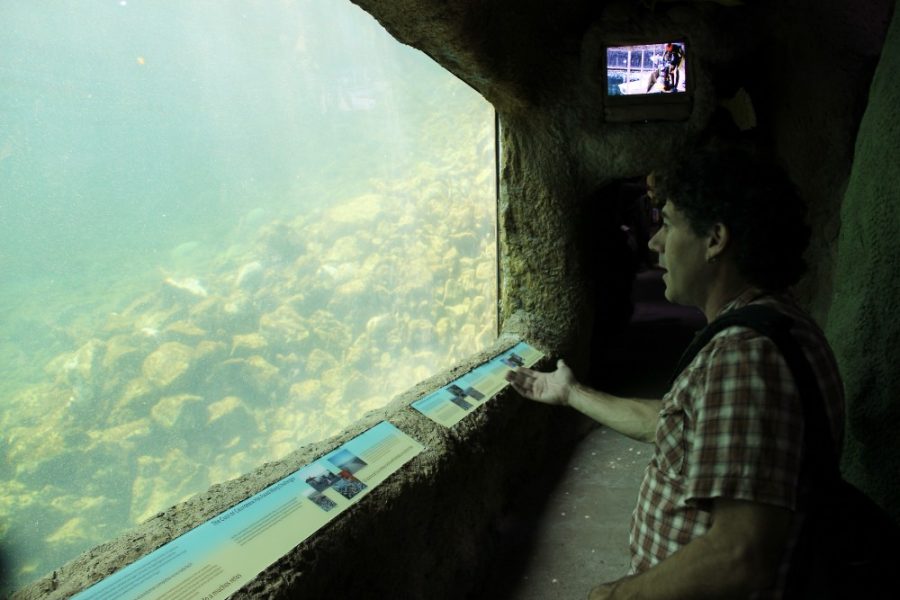A hermit crab skitters across the rocks at the foot of a spiny cactus. On the shoreline, the waning tide has revealed a series of pools occupied by urchins and starfish. Out on the water, a shimmering fish lunges for an easy meal.
But this isn’t Rocky Point or Cabo San Lucas — it’s Arizona. The desert sea is the vision of Rafe Sagarin, program manager for the Biosphere 2 Ocean.
Once home to the only living coral reef in Arizona, the massive aquarium at Biosphere 2 has been relatively dormant since Columbia University stopped performing research at the facility in 2003. Despite its neglected state, Sagarin said he is confident that the ocean will flourish as a part of the UA, which acquired Biosphere 2 in 2011.
“There’s not a lot of life in [the ocean] right now, so my idea is to reimagine it and reconstruct it as a model of the Gulf of California, which is our closest ocean,” he said.
As opposed to the Caribbean model, the new ocean will highlight the connections between the sea and the Sonoran Desert, which Sagarin called the “richest and most interesting” in the world.
“This desert that surrounds us is that rich because it’s so close to the Sea of Cortez,” he said, “which feeds all the moisture for the monsoon rains.”
The revamped ocean will be home to a variety of fish species, as well as octopuses, eels and stingrays. A giant seaweed forest at the deep end of the ocean could also one day conceal the presence of a sea turtle or a 5-foot-long Humboldt squid.
To mimic the coastal desert, the landscape will feature a rocky shore complete with several small tide pools and a sandy beach. Sagarin will also bring in cacti and other native plants, which will inhabit a small island in the center of the miniature sea.
The ocean at Biosphere 2 serves the dual purpose of both educating the public about marine science and functioning as a state-of-the-art research facility, Sagarin said, adding that it offers researchers “the complexity of nature with the control of a laboratory.”
Upcoming experiments include the introduction of 5,000 Gulf of California hermit crabs to the ocean to see if they can clear away the algae that has overrun much of the tank, as well as research into a sponge that has been found to excrete a molecule with medicinal properties, said Franklin Lane, an education specialist for Biosphere 2. Lane interacts with the more than 10,000 students that visit the facility each year.
Kevin Bonine, director of education and outreach for Biosphere 2, emphasized the importance of educating the public — especially children — about the ocean.
“Having the resource at Biosphere 2 where people can get wet, get their hands on algae, get their hands on hermit crabs, do some actual data collection, those are extremely valuable opportunities to engage with kids and get them excited about science and excited about their natural environment,” Bonine said.
To raise both money and awareness for the project, Sagarin has launched a crowdfunding campaign on RocketHub, marking the first time the UA has officially approved crowdfunding for a scientific project.
—Follow Mark Armao @MarkArmao









